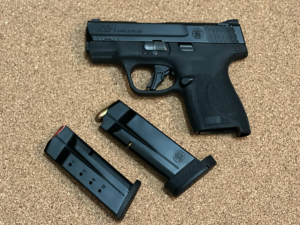I’ve had a lot of first aid training over the years – starting with Boy Scouts and Sea Scouts, and moving on to my professional career with Red Cross training, and then additional training as a Boy Scout Leader.
I know how to stop the bleed. I know how to perform CPR. I know all the basics. And I can easily update and refresh my certifications online.
Yep, I only know the basics.
I’m glad that I have some training. I hope I never have to use it for more than a scrape or cut. However, given the world we currently live in – mass shootings, increasing violent crime, increased social tension – the likelihood that I have to use what training I have seems to increase regularly.
It makes me fear that my basic first aid training is not enough.
Since the family and I like to travel and go camping, I’ve wanted to take a Wilderness First Aid class. Unfortunately, when I have the time, classes haven’t been available. Classes have been more sparse since the start of COVID, and especially problematic is that they are usually several hundred miles away from home. When I look at classes, they are in Arizona, Colorado, or Utah. One of my 2023 priorities is to get Wilderness First Aid trained.
Where to get trained
If you are looking to get trained, here are some great places to start:
What about a First Aid Kit?
I really recommend getting some training before you go down the rabbit hole of buying or putting together a first aid kit. That way, you can tailor the kit you purchase or put it together to your skill and comfort level. You will also learn all the acronyms that come into play – IFAK, TFAK, and more.
If you decide to put together a first aid kit – which is what I did for our cars, camper, and backpacks – you will need to be careful to make sure that you source quality products from quality sources. Some items, like antiseptic wipes, alcohol wipes, bandages, and gloves, can easily and inexpensively be sourced from places like Amazon, Wal-Mart, or Target. Other items, like splints, quick clot, and tourniquets, should be sourced from a reputable vendor since there are a lot of counterfeit items out there that look good but are of inferior quality.
If you decide to purchase a first aid kit, make sure that you are purchasing from a reputable provider. Some places even allow you to spend HSA or FSA money on a first aid kit. This is a great option if you are in a use-it-or-lose-it scenario with that money (like, wow, I still have $300 in my FSA that I will lose on New Years’ Eve if I don’t spend it). As with purchasing individual items, make sure that you are buying from a reputable source – check reviews on the internet if you have to.
Remember, a first aid kit isn’t just something that you can chuck into the trunk of your can and forget about. It is something that you need to check on after every use to make sure that you still have everything you need, and you have to make sure that things haven’t expired and need to be replaced.
